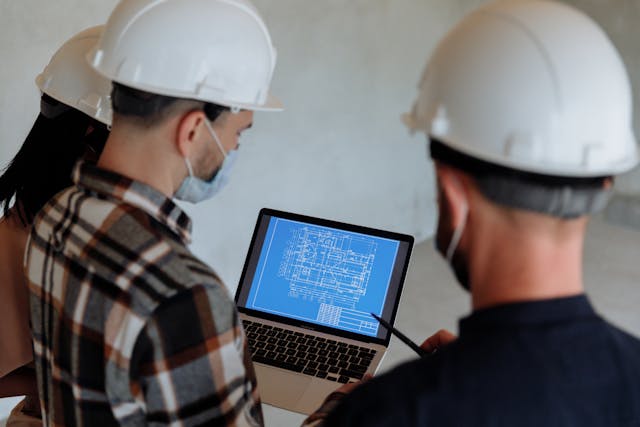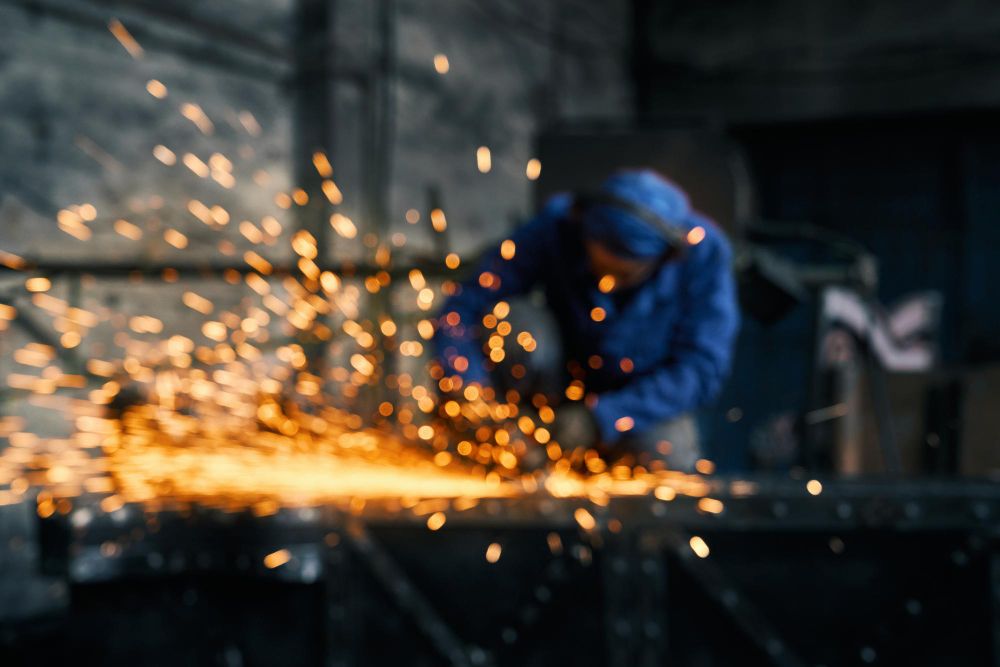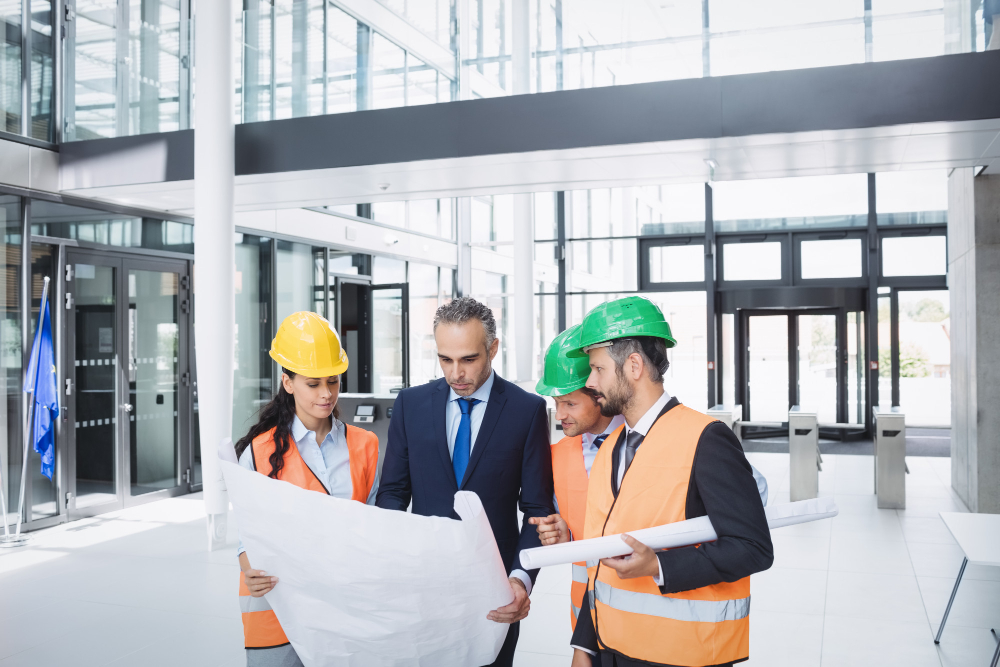The Unseen Hero of Construction: Temporary Works Design Explained | Hadeed Engineering

Discover the critical role of temporary works design in ensuring construction site safety and success. An inside look from Hadeed’s experts.
Behind every permanent structure is a network of temporary systems that make construction possible safely, efficiently, and in sequence. These systems are known as Temporary Works.
Whether it’s excavation shoring, scaffolding, formwork, or crane platforms, temporary works design is the structural backbone of the construction phase. It’s where safety risks are either controlled through engineering or allowed to escalate through oversight.
In this blog, Hadeed Engineering explains what temporary works design involves, why it’s critical to construction safety, and how we approach it across infrastructure and commercial projects.
What Is Temporary Works Design?
Temporary works design refers to the engineering of short-term structures and systems that support and protect the construction of permanent works. These elements are not part of the final build, but they are essential to making it happen safely, efficiently, and in compliance with standards.
Each is engineered to withstand specific loads and environmental conditions during construction, then safely removed once its purpose is served. Done right, it allows work to progress without disruption or risk. Done poorly, it can cause accidents, result in cost blowouts, or lead to structural failures.
Types of Temporary Works Structures & Their Functions
Temporary structures are tailored to suit specific construction phases, environments, and loads. Each type plays a distinct role in enabling stability and protection during the construction process:
I. Structural Support Systems
- Excavation Shoring: It supports trench walls and deep excavations by resisting soil pressure. Critical for preventing collapse during underground work or service installations.
- Formwork and Falsework: Temporary moulds and support frames that are used during concrete pours. Designed to hold shape and weight until the structure gains strength.
- Scaffolding and Access Platforms: They provide safe elevated access for workers and materials. Must account for live loads, weather exposure, and site-specific clearances.
- Propping and Underpinning Systems: Support existing structures during modifications or excavation beneath them. Typically used in refurbishment or staged demolition works.
II. Site Infrastructure
- Crane Bases and Working Platforms: Stabilized surfaces that distribute load from lifting equipment. They require precise geotechnical input and load analysis to prevent ground failure.
- Temporary Bridges and Access Roads: Enable plant movement and material logistics across uneven or obstructed terrain. Often modular and reusable for phased works.
- Protective Barriers and Hoarding: Separate public areas from work zones and contain debris. Designed for wind loads and crowd impact where relevant.
III. Construction Aids
- Temporary Steel or Concrete Structures: Used to brace incomplete works or create load-bearing platforms. Designed for limited use durations but must meet full safety and structural criteria during service.
- Lifting and Moving Equipment Supports: Frames, gantries, or custom supports used to position, shift, or lower materials or structural elements into place.
- Weather Protection Systems: Temporary coverings or enclosures designed to shield works from wind, rain, or UV exposure.
How Temporary Works Design Directly Impacts Site Safety
Industry data shows that over 70% of construction site accidents are linked to temporary works failures. These incidents don’t always start with material failure; in many cases, they begin much earlier: with incorrect design assumptions, misaligned construction sequencing, or incomplete risk planning.
When design is rushed or based on generic models, risks move unchecked from the drawing board to the construction site. Common failure scenarios include:
- Overloaded platforms due to underestimated live loads or unexpected material staging
- Ground movement or collapse from shoring systems that don’t reflect accurate soil behaviour
- Lateral instability where bracing is missing, undersized, or not installed in time
- Timing conflicts between temporary and permanent works caused by uncoordinated sequencing
Regulatory Compliance for Temporary Works Design in Australia
In Australia, temporary works are subject to the same regulatory obligations as permanent structures, particularly when they support high-risk construction activities. A combination of legislation, codes of practice, and Australian Standards defines how temporary works must be designed and managed:
1. WHS Act and Regulations
Under the Work Health and Safety (WHS) Act and Regulations, engineers, contractors, and clients must eliminate or minimise health and safety risks so far as reasonably practicable. This duty extends to temporary works, which are considered structures under the legislation.
2. Safe Design Code of Practice
Design responsibilities are clearly outlined in the Safe Design of Structures Code of Practice, which applies across most Australian jurisdictions. Temporary works engineers must:
- Consider how the structure will be constructed, used, and dismantled
- Account for environmental conditions and maintenance needs
- Document risks and communicate them to the contractor and site team
3. Safe Work Method Statements (SWMS) for High-Risk Work
Many temporary works support activities classified as High-Risk Construction Work (HRCW). In such cases (e.g., work in or near trenches and excavations, at heights, where collapse is a possibility), a Safe Work Method Statement (SWMS) is legally required. This document outlines the risk controls for each task and must be in place and reviewed before work begins.
The Role of a Temporary Works Engineer
At Hadeed Engineering, our temporary works engineers are engaged early to align each solution with the project’s construction methodology, staging, and site conditions. Their responsibilities span several key areas:
1. Design and Planning
Temporary works engineers create the detailed designs for temporary structures, ensuring they can withstand predictable loads and stresses during construction. This step involves complex calculations that take into consideration factors such as soil conditions, environmental loads, and construction sequencing.
2. Safety Management
Their responsibilities also involve implementing robust safety measures through comprehensive risk assessments and detailed safety plans. They ensure temporary structures meet all regulatory requirements and can handle worst-case scenarios, including seismic events and extreme weather conditions.
3. Coordination and Communication
Temporary works engineers work closely with permanent works designers, structural engineers, and project managers to ensure seamless integration of temporary solutions with overall project objectives. This coordination is essential for preventing conflicts and ensuring construction sequences proceed smoothly.
4. Site Supervision
Regular site visits and compliance checks ensure that temporary works are installed, maintained, and used in accordance with design specifications. This hands-on oversight is crucial for identifying potential issues before they become critical safety concerns.
Hadeed’s Approach: Safe, Durable, and Efficient
At Hadeed Engineering, temporary works design is treated with the same technical discipline as permanent structures. Our focus is on delivering engineered systems that are compliant, practical, and built to perform under actual site conditions.
We specialise in the structural design of temporary works across a broad range of construction and infrastructure projects. These include major transport upgrades, such as the West Gate Tunnel Project and the South Geelong to Waurn Ponds Duplication, where our team has supported the safe and staged delivery through well-integrated temporary structures.
Our designs are:
- Engineered for constructability; easy to install, modify, and remove
- Compliant with all relevant codes and safety obligations
- Developed for durability under real construction loads
- Coordinated to fit the build sequence
From concept to certification, Hadeed engineers remain directly involved, producing design documentation, advising on installation, and supporting site teams throughout the process. On projects such as the Princes Freeway Interchanges Upgrade, this proactive approach helped ensure works could proceed safely under live traffic conditions, with no compromise to delivery schedules.
Our clients trust us to provide:
- Accurate structural analysis across steel, concrete, and hybrid systems
- Responsive coordination with contractors and project engineers
- Designs that reduce risk, simplify execution, and enable progress
Temporary works may not be part of the final structure, but the safety, efficiency, and success of the project depend on getting them right. That’s where Hadeed delivers.
Need dependable temporary works design?
Contact Hadeed Engineering to discuss your next project.



